Giovanna Amati: The remarkable story of F1's last female driver
- Published
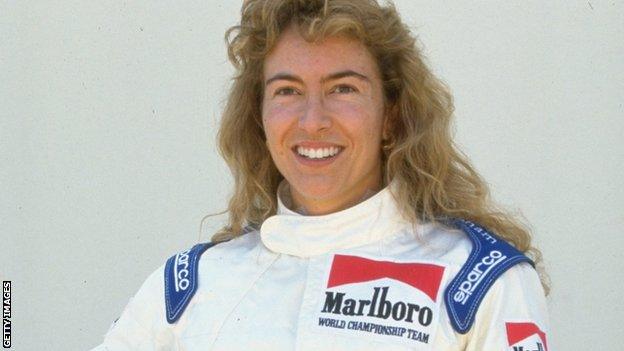
Giovanna Amati was the last woman to attempt to qualify for an F1 race
Susie Wolff's decision to hang up her helmet last week in frustration at a perceived lack of opportunity reinforced one of Formula 1's perennial questions - where are all the female drivers?
Twenty-three years after Giovanna Amati raced in qualifying for the Brabham team at the South African, Mexican and Brazilian Grands Prix, the wait for a woman driver to start a race for the first time since Lella Lombardi in 1976 goes on.
And for Amati, Wolff's retirement indicates it shows no sign of ending soon.
"I cannot see any woman at the moment racing at the top, achieving a seat in F1," says the Italian.
"I am not saying they are not good enough, just that it takes the right team, a good budget and a lot of passion to go ahead - and a lot of perseverance also."
"What a pity [Wolff retired], maybe she could have done well in other championships, she's a talented woman.
"Sometimes people get tired. If you don't achieve what you want, you quit. It's the easiest decision.
"But it's a personal decision. I hope she will change her mind in one year or two. She is still young enough to race elsewhere, such as in GT or at Indianapolis or Le Mans."
Amati certainly knows all about the challenges faced by aspiring and ambitious female drivers looking to carve out a career in F1.
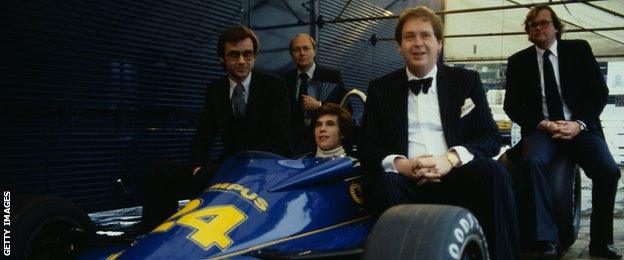
British driver Divina Galica ran in qualifying for the Hesketh team during the 1978 season but failed to make the grid on both occasions
"First and foremost it's a problem of strength. Everyone thinks it is easy to drive on the circuits, it is not easy at all. The car is very stiff, it is very tough to drive and it takes a lot of stamina to finish the races.
"You can't just wake up one day and say 'I'm a Formula 1 driver', you have to work hard."
The hard work is a given. But there are suggestions more sinister forces are creating a carbon fibre ceiling for women in the sport. Did Amati ever encounter direct sexism on the track?
"Of course, all the time, especially from the media. The media didn't like me, I never understood why.
"Also from the drivers and owners. Basically in their minds they were thinking, 'What is she doing here? This is not her place, this is my place'.
"It is difficult to change this attitude, but I didn't care then and I don't care now."
Amati's indifference to the hostility she faced was fostered by a deep determination to take her love of motorsport as far as she could, having nurtured an interest from an early age.
"Since I was eight or nine years old, I enjoyed driving anything I could find, even the tractor at our country house.
"It was a passion. When I was practising for my driving test I used to do the drive to school with [friend and future Italian racing driver] Elio de Angelis. He drove me there.
"So, slowly, slowly, I became a racing driver. First Formula 3, then Formula 3000 and then one day I got a call from Mr Ecclestone.
"It sounds easy but it wasn't. I got the call in January and the championship started in March and I didn't know how to get the money needed. I was about to go to the USA to race in the Indy formula so I had just two weeks to find a budget."
Female drivers to have entered an F1 Grand Prix | ||||
|---|---|---|---|---|
Name | Seasons | Teams | Entries (starts) | Points |
Maria Teresa de Filippis (Ita) | 1958-59 | Maserati, Behra-Porsche | 5 (3) | 0 |
Lella Lombardi (Ita) | 1974-76 | March, RAM, Williams | 17 (12) | 0.5 |
Davina Galica (GB) | 1976, 1978 | Surtees, Hesketh | 3 (0) | - |
Desiré Wilson (SA) | 1980 | Williams | 1 (0) | - |
Giovanna Amati (Ita) | 1992 | Brabham | 3 (0) | - |
Just when it looked as though Amati was going to have to turn down the chance of a lifetime, fate smiled kindly upon her.
"My father was no longer alive but at that time one of his friends had become prime minister of Italy [Giulio Andreotti].
"He gave me an appointment at 5:45am. I couldn't sleep all night, thinking about what I was going to say. I was desperate.
"It was the only chance I had and he helped me. At the last minute, I could meet the budget."

Amati was replaced at Brabham-Judd by future world champion Damon Hill, who failed to qualify the car in six of eight races before the team folded
The stroke of good fortune that allowed Amati to realise a lifelong dream came 14 years after she endured a harrowing personal nightmare.
In February 1978, as a climate of lawlessness and extreme political violence engulfed Italy, the 18-year-old Amati - whose father was a highly-successful film producer and cinema-owner - was kidnapped outside her family's villa for ransom by an armed group led by Marseille gangster Jean Daniel Nieto.
Held hostage in a wooden cage for over 70 days, Amati was eventually released, reportedly after her father used box office receipts from the first Star Wars film to help meet the kidnappers' demand of almost $1 million.
Amati is understandably reluctant to revisit that dark period in her life, but she does address the salacious newspaper coverage at the time that speculated on the nature of her relationship with Nieto, suggesting she had fallen in love with him during her captivity and maintained a relationship after her release.
"All the stories that you have read in the newspaper were wrong, completely wrong. When I went out I just wanted to come back to my family and to get all the group arrested.
"These are stories that the media put out."

Italy's Lella Lombardi, here in the Brabham BT42 in 1974, made 12 starts, scoring half a point
Nieto was sentenced to 18 years in prison, before escaping in 1989 and going on the run. He was finally recaptured in 2010.
For Amati, the modern images of captives held by the so-called Islamic State cause her anguish.
"When I can see what is going on in the world when ISIS get hostages, I feel so bad for them, I feel so bad.
"You know, of course, sometimes you lose your faith, your hope because you think that everybody has forgotten you, but this is not true, you realise this is not true.
"You just don't have the contact with the rest of the world, but then once you get out you recover."
Possessing natural fortitude and determination to succeed, Amati agrees her inherent resilience was calcified by her traumatic experience.
"For sure it made me stronger. I mean, spending three months in captivity - it makes you stronger. Either you go mad or it makes you stronger, and I got stronger."
Such strength helped propel Amati to a place on three F1 Qualifying grids, with her final appearance coming at the Brazilian Grand Prix weekend in 1992 before she was replaced by Damon Hill.
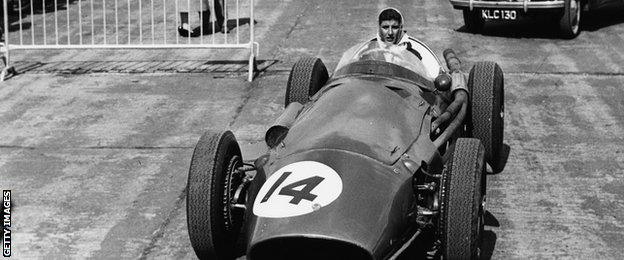
Maria Teresa de Filippis drove a Maserati 250F during the 1958-59 season
As the F1 season heads to Sao Paolo for its penultimate race, Amati's reflections turn to her time on that track all those years ago.
"I had all the interest on me because I was the only woman in the championship but I couldn't perform, with that car I couldn't perform.
"Brabham at that time had a lack of sponsors and lack of budget. My engine was leaking oil, water, everything, and when I asked to change it there were no spare parts. So it was difficult, all the other cars were performing much better than ours.
"I couldn't qualify with that car and the problem was that they didn't give me another chance afterwards."
Susie Wolff on her call from Sir Stirling Moss
No other woman has had a chance either since then. Formula 1 chief Bernie Ecclestone has suggested that the solution could lie in separate races for female drivers and, although rejected by Wolff and the head of the FIA commission for women in motorsport Michele Mouton, it is an idea that Amati believes is worth considering.
"I think that Bernie's idea is very bright, to make an F1 only for women, because then at least you can race at the top of competition.
"But then who pays for it? It's not easy. I can see you need a lot of money to make it work.
"Right now there are only 20 cars in F1 so I can't foresee any women being in the top 20 drivers in the world. When I drove there were 32 cars, not 20.
"So maybe he should make a formula with the old cars, or maybe the one who wins the race can then race with the men, or something like that - but this is the only chance right now for a woman to race an F1 car."
More from BBC F1 |
|---|
For the latest news and analysis, follow @bbcf1, external on Twitter |
Whether it is in races against men or not, Amati has some trenchant advice for those women looking to establish themselves in F1 cars in the future.
"Be a women outside the track, not inside the track. Inside the track you must be like a man. Why wear a pink helmet? This is crazy!
"If you want to beat them you have to be like them. Maybe the [kidnapping] experience made me stronger like a male."
As for Amati's own future, the call of the track has lost none of its allure over the passing years.
Ironically, just as the totemic Wolff departs the motorsport scene, one of its female pioneers from a previous generation is plotting a return.
"I have some offers to race again. I will let you know in one or two months, but it definitely won't be Formula 1.
"But I have decided to go back to the track. Nothing else can give you the adrenaline. You feel alive."
- Published4 November 2015
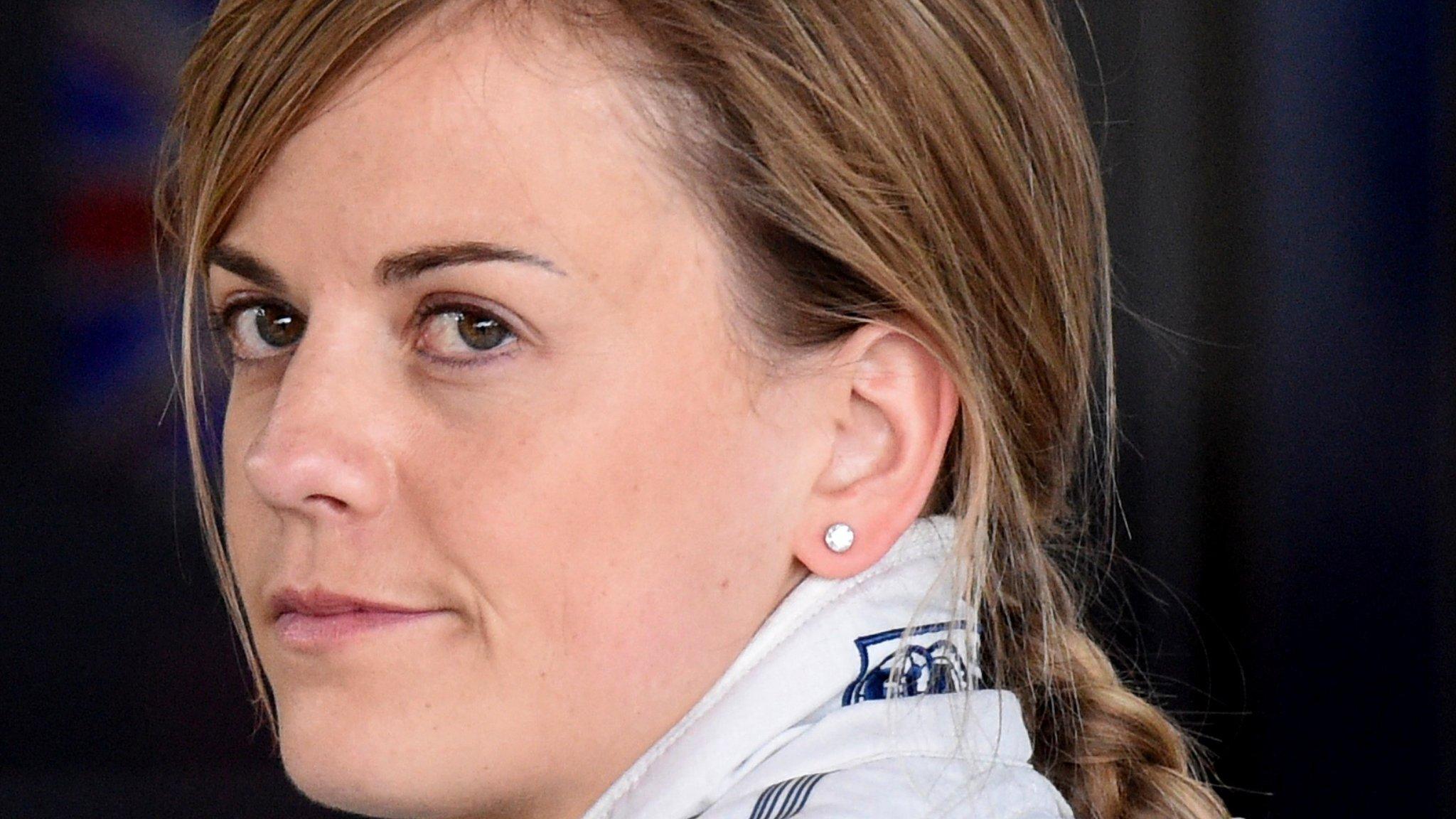
- Published10 November 2015

- Published11 November 2015
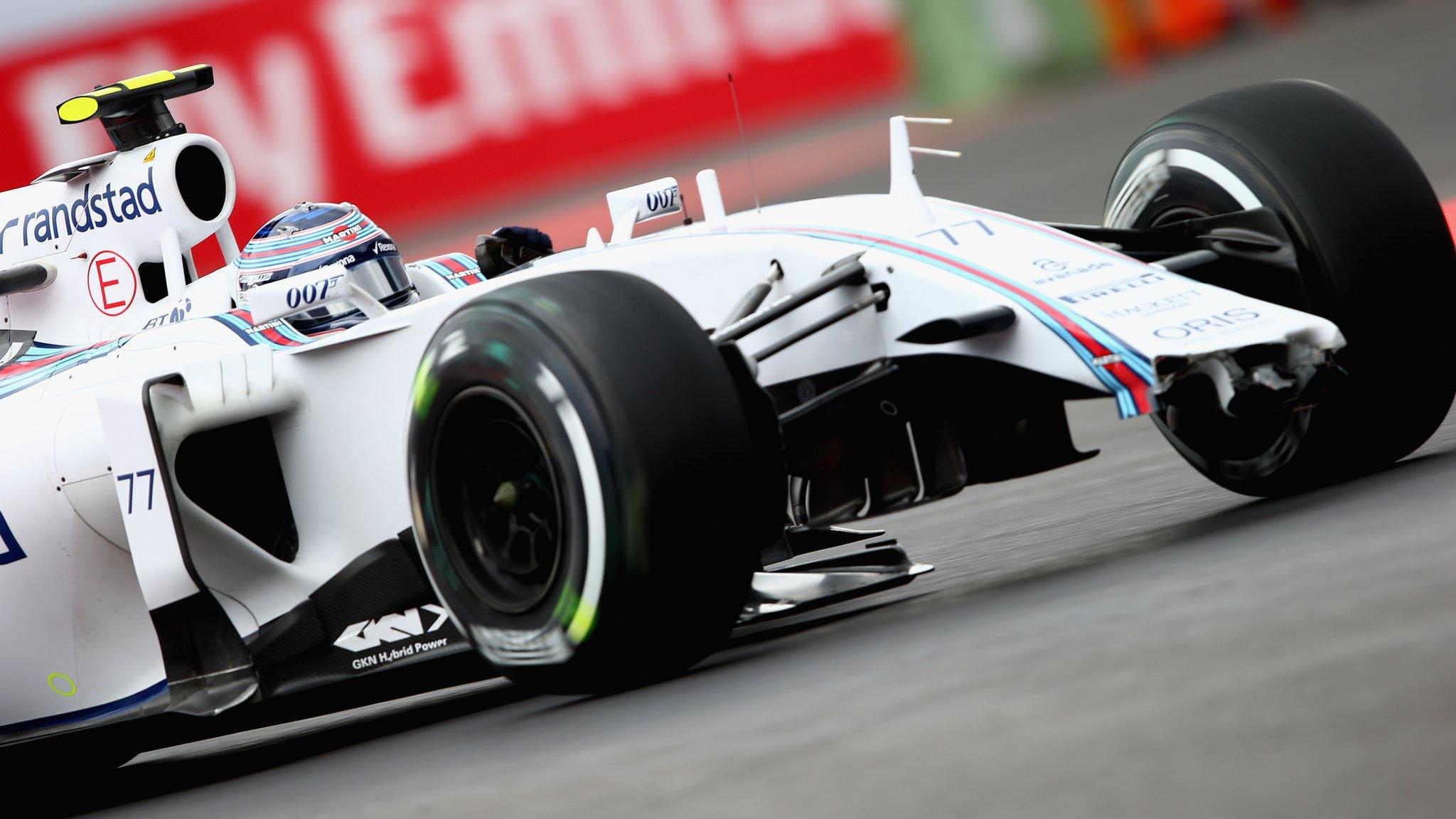
- Published10 November 2015

- Published18 December 2015

- Published2 November 2018

- Published26 February 2019
